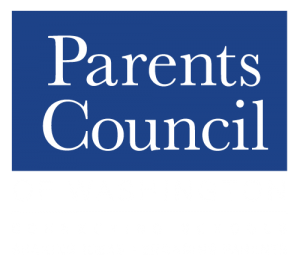CHALLENGE OF ONLINE LEARNING IN SECONDARY SCHOOLS
Edmund Burke School
One of the roles of a Head of School is to provide “the vision thing,” (to quote the first President Bush.) I try to be aware of emerging educational trends – what are parents reading about in the paper? What are teachers hearing about at conferences? As the head of a progressive school, it’s even more important for me to be up on the latest research because part of our mission is to incorporate proven innovations into our teaching.
Sometimes new ideas that we thought would be hard to incorporate turn out to be essential. Remember when schools sent home paper fliers? Mailed report cards? Going completely electronic was tricky at the time, but now it’s hard to even imagine school communication without emails, online newsletters and websites. Bringing the teacher and classroom into this virtual world appears to be the next step – “online learning” is now popping up everywhere.
Proponents of online learning cite the benefits of reaching a large audience, the reduced cost, and the flexibility of taking a class at any hour. Skeptics point out that there’s no substitute for the personal attention and expertise of a live teacher, it’s very hard to control cheating and plagiarizing, and it can be used as an easy way to save money without considering whether it works.
As is true of any technology, the medium itself is not bad or good, it depends how it is implemented. Here’s a brief primer on the different types of online learning:
Open Online Course
These typically do not include interaction with a teacher. They are just between a student, the software and a computer screen. While efficient and cheap, they require a lecture format, and don’t allow for the teacher to respond to student questions or to be flexible with concepts being taught. “MOOCS,” or massive open online courses, can have thousands of participants – they are known to work well for college level science and math courses.
Limited Online Course
Many colleges offer online courses that follow a traditional class format. Lectures, homework, tests are all online, but there is interaction with the teacher via email. Participants pay tuition and earn credit. Enrollment is limited to keep it possible for teachers to respond to emails and to grade student work.
Blended, or Hybrid Learning
This approach is a combination of traditional and online work. It means making use of online exercises and videos to complement the textbook and lectures. It usually means that students do some work on computers while in class.
Flipped Classroom
In this model lectures are delivered online, thus can be viewed both in school and at home. Class time is used for labs, projects, discussions or field trips.
All four of these approaches work well for some courses and students, and not for others. Just like traditional classes, much depends on the thought that goes into creating the course, the delivery and the effectiveness of the assessment. It is critical to consider the ages and developmental needs of the students as well as their experience with computers. Not every young person has access to a personal computer or is comfortable interacting with an online video.
Over the course of my career I have seen technology in the classroom rise and fall and rise again in popularity. It’s clear that we cannot ignore the impact of technology on our students in their daily lives, in college and in the workplace. However, I firmly believe that there is no substitute for the wisdom, flexibility and insights of a teacher in a classroom full of students. I do think there’s a role for online learning in secondary schools. At Burke we are developing a pilot program using the “flipped classroom” approach, with an eye towards opening up more time in science classes for laboratories, projects and discussions. Our goal is to find the right mix that will allow us to enjoy the best of both the traditional and virtual world.
One thing is certain, today’s students will be exposed to online learning in college or even as adults. So it’s important that teachers and administrators look at ways to prepare secondary school students for online instruction. Although it might seem like a fad right now, I’m sure the day is coming when a school without online learning will be considered as outdated a school without a website!

